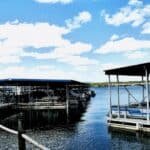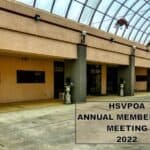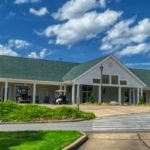By Cheryl Dowden, February 3, 2020
On January 10, 2020, the Garner vs. HSV BOD, POA hearing was held in Saline County Court, Division III under Judge Grisham Phillips.
Plaintiff Gene Garner was represented by Philip Montgomery of Legacy Law Group. The HSVPOA Board of Directors (BOD) was represented by E. B. (Chip) Chiles IV of Quattlebaum, Grooms, and Tull.
Were the original Protective Covenants revoked or just amended and added to?
This case dealt with the new Protective Covenants imposed on residents of Hot Springs Village. The original Protective Covenants comprised a mere three pages, while the new Protective Covenants is a much larger 120-page document. The new Protective Covenants were adopted by the Hot Springs Village Board of Directors on April 18, 2018.
In this law case, both sides agreed that the HSVPOA BOD has the authority to amend, rescind and add to the original Protective Covenants.
The difference of opinion lies with whether the original Protective Covenants were revoked and if the new Protective Covenants are a creation of a new document that replaces the old Protective Covenants. The Plaintiff (Garner) argued this is what happened. Also, the Plaintiff argued that the new Protective Covenants contain a fair amount of City Code. The Defendant (HSVPOA) argued the BOD merely amended and added to the original Protective Covenants.
Judge Phillips required more information for a final ruling
Although Judge Phillips usually rules from the bench, in this lawsuit, he did not feel he had enough information to render a final ruling. Instead, Judge Phillips put the burden on the two attorneys to tell him which of the provisions constitute more restrictions and which ones are unreasonable.
Attorney Montgomery filed post-hearing brief
On February 3, 2020, Attorney Montgomery fulfilled the judge’s request and filed a post-hearing brief. (Please see post-hearing brief below.) This brief provides a synopsis of the New Protective Covenants “as to what would be considered ‘amendments’ or ‘additions’ to the original Protective Covenants. The Plaintiff’s position is that the New Protective Covenants are “entirely new covenants and restrictions and so change the character and nature of Hot Springs Village as developed in 1970, that they are invalid for failure to obtain owner approval, failure to file with the real property records of Garland and Saline Counties and failure to have the required acknowledged signatures in order to be valid.” (See Ark Code Ann. 14-15-404 and 18-12-103)
Plaintiff goes into great detail outlining the new restrictions
Attorney Montgomery goes into great detail outlining the additions. He said that “never before have owners been required to obtain a permit to perform things such as remove trees or install and/or change landscaping.” These actions did not require a permit in the past.
Naturally, Property Owners knew there may be an amendment “here and there.” “But, what this amounts to is a ‘bait and switch’ and complete overhaul of the restrictions under which they originally agreed to be bound.” If the new Protective Covenants are allowed to stand this sets a precedent where the Protective Covenants could be completely “overhauled and replaced on a whim” at any time.
The original Protective Covenants were comprised of common restrictions often found in subdivisions.
Attorney Montgomery stated the new restrictions and covenants are too numerous to be all-inclusive in a brief without making the brief too cumbersome to read. Attorney Montgomery highlighted the table of contents from the new covenants, which show the newly created covenants. The new covenants contain 104 restriction categories, while the original Protective Covenants contained only 24. “The sheer volume of material reveals that the [new] covenants are not mere ‘additions,’ but are wholly new covenants and restrictions.
Examples of requirements in the new Protective Covenants are:
- Homeowners must install irrigation systems for their landscaping
- Landscaping plans must now be submitted to the Architectural Control Committee for approval
- There are restrictions on size and materials for homes and outbuildings
Permit requirements in new Protective Covenants
Additionally, a Property Owner is now required to obtain a permit for many reasons. Previously this was not a requirement in the Protective Covenants. Some of these reasons are:
- Hosting an event
- Removal of ‘damaged’ landscaping requires a permit. In other words, if you have a diseased tree that cannot be saved, you must pay for and obtain a permit in addition to hiring the landscaper to remove the tree (unless you are capable of performing this dangerous work yourself)
- Interior and exterior building alterations which includes roofing, siding, windows, doors, and porches
- Conducting a garage or yard sale
- Electrical
- Plumbing
- Heating
The word “permit” cannot be found in original Protective Covenants
“Not only did the Original Protective Covenants not require a permit for any of the above actions, but permits also were not even mentioned” in the Original Protective Covenants. The word “permit” cannot be found anywhere in the original document.
Are properties grandfathered in?
Homes purchased under the previous covenants are grandfathered in as long as ownership does not change or remodeling occurs. But, when Home Owners remodel, the replacements and/or additions must align with the new restrictions.
In addition, when Home Owners sell their homes, the buyers of the homes are not grandfathered into the original Protective Covenants. The property may be required to be brought up to compliance with the new Protective Covenants. This responsibility will typically fall on the seller or they may lose their buyer.
Page 10 of the April 18, 2018 (new) Protective Covenants
3.9. “PRE-EXISTING CONDITIONS
3.9.1. Structures, uses, site development, and landscape approved prior to the adoption of this Code may continue to operate and be maintained in their approved state.
3.9.2. The ACC may require certain non-conforming conditions to be remedied prior to the sale of a property or modification of structures, uses, site development, or landscape.
3.9.3. Modification to structures, uses, site development, and landscape is subject to Level 2
review and may be subject to Level 3 review at the discretion of the ACC……..”
Lot owners are not grandfathered in
All of the unbuilt lots are subject to the new Protective Covenants. The lots are not grandfathered into the original Protective Covenants. Some people bought these lots many years ago and have been paying assessments all of these years. When they start to build, they will realize the “deal” has changed. In other words, as Attorney Montgomery has stated, this is indeed a “bait and switch.”
New Covenants akin to a ransom note
Attorney Montgomery also stated, “These new covenants are something akin to a ransom note containing words and letters cut out from magazines and newspapers. Words and letters were cut out from the original 3-page protective covenants to create this new document. Much like the ransom note, the words and letters can barely be used to determine the source of the original document they came from – that is because the character of those words has completely changed and has taken on new meaning. this case is about more than just a page count, but the jump from 3 pages to 120 pages illustrates the significant change to the existing owners. That is to say, these are not simple additions here and there, but a complete overhaul of the restrictions and in turn the community that has been in place for fifty years.”
***
Post-hearing brief submitted by plaintiff
By Cheryl Dowden, February 3, 2020
Post-Trial-Brief-from-Plaintiff-Garner-2.3.20Thank you for reading. Click here to join us in our private Facebook Group.












Minn. Daly
02/04/2020 — 11:06 am
Gene, all village property owners members of HSVPOA are thankful to you for exposing these egregious compliance rules. My hope is Judge Phillips will see that as well. Again my thanks to you! Minn Daly
Walter Chance
02/04/2020 — 11:12 am
Again, Gene we thank you! I would like to add that the permit fees mentioned have just gone up significantly. What is the cap on these permit fees. Who sets the fees. And is there a percentage cap like there are with assessments. Does increases have to be voted on. The answer is no, the BOD has authority to raise these fees without members consideration. 😡
Karen Daigle Lundberg
02/04/2020 — 11:51 am
A big thank you to Gene Garner for taking this lawsuit to the courts on his own, on his own dollar and stand up to our POA. That was an astounding brief filed by Philip Montgomery. Our Protective Covenants and our arguments against them is a very complicated issue, and Philip Montgomery managed to break down this issue very concisely and not so cumbersome that the Judge would lose interest. I am no expert, but after reading this Brief, I don’t know how the Judge could possibly rule against Gene Garner. My thanks both to Gene Garner and Philip Montgomery.
Lloyd Sherman
02/04/2020 — 12:07 pm
When you consider that the NEW Protective Covenants are a by-product of the Comprehensive Master Plan (CMP) which outlined a change of direction of the Village from a maintenance organization to that of a development organization, I don’t see how any logical argument can be presented that the NEW Protective Covenants were not adopted to support this CMP.
The CMP was created via a Request for Proposal (RFP) calling for sealed bids to be received no later than 4:00 PM on July 27, 2017. This document in the opening paragraph “GENERAL INFORMATION” stated:
“inviting planning and design teams with expertise in Town Center Design, Commercial and Residental Infill, New Development Land Use Planning, Neighborhood and Economic Development Planning”
I would point to the use of the word NEW along with these requirements also being new requirements to the Village structure.
Now we move on to Page 4 and “BACKGROUND, where the RFP states:
“a Comprehensive Master Plan for Hot Springs Village, with specific emphasis on a new town center, new pocket neighborhoods, transportation, signage, and creating an individual character for 9 distinct villages.”
Again, I point you to the word NEW. So how would the Protective Covenants now be considered anything but new?
And because you cannot consider any of what the RFP requested as anything but NEW to the Village, how then could the Protective Covenants not be considered anything but NEW? But just to ensure the knew what they were asking for, let’s flip to page 8 and note one of the DESIRED OUTCOMES:
“Zoning and/or other policy recommendations to support the proposed land use/development plans.”
And if by now it wasn’t clear enough what the RFP was to provide, also on Page 8 under SCOPE OF WORK:
“a proposed scope of work that accomplishes the stated purpose, proves the Desired Outcomes.”
And if that doesn’t already tell the story, let’s go to Page 9 TOWN CENTER AND POCKET NEIGHBORHOOD PLANS:
“c. Specific recommendations for amendments to the Associations zoning and/or development covenants necessary to implement the land use design plans.”
It would have been pretty obvious to those who had read the RFP that we weren’t spending $500,000 on a plan to make the Village better but to fulfill an agenda of turning the Village into what it couldn’t and wouldn’t ever be. This orchestrated from the very beginning and everything that happened as a result of this CMP was pre-mediated and without any input from the property owners.
Vicki
02/07/2020 — 2:54 pm
And there it is ….
Frank Shears aka Bubba
02/04/2020 — 3:01 pm
A HUGE THANK YOU to Gene Garner for the law suit! It clearly shows what we have been complaining about for the past 2 or more years.
If they had even a shred of honor left the POA and CEO would hang their head in shame.
OOOOOPS… I questioned their honor. Shame on me. (tic)
Regards,
Frank Shears
Gene Garner
02/04/2020 — 3:49 pm
This Brief involved many hours of research, comparing the unrecorded 116 page version to the 3 page Cooper recorded Covenants.
There are 17 chapters in the unrecorded, 9 are completely new. Chapters 1, 3, 4, 6, 7, 9, 11 and 12 can be considered related (some by a stretch) to the Cooper version. There are approximately 104 separate entries in the index (excluding chapter titles), about 25 can be traced back to the recorded covenants. The remaining 79 are orphans –newly created.
The two most egregious examples of newly created covenants are Chapter 5 Permits and Chapter 13 landscaping. There’s no mention of “permits” or “landscaping” in the recorded covenants.
Most of the 116 pages contain ideas and concepts unknown and unwanted when HSV was built by CCI.—Gene
Robert Busse
02/04/2020 — 4:26 pm
I believe that all the maneuvering by the CEO and BOD were done after the fact and all designed to change and replace any laws, documents, policies, etc. that did not comply with the purpose of the CMP and its mandates. They were instigated to make the implementation of this plan easier and more successful. None of the changing, updating, modernizing of the rules, etg. for our Village were even being thought about until the CMP materialized. The CMP completely re-designs and recreates HSV into something that the Developer did not intend, nor did the many thousands of people that bought property and built homes here intended. To say or think that the covenants were needing change but for any reason other than to be in line with the CMP and its end results is crazy.
HSVP J
02/04/2020 — 9:02 pm
3.9.2. The ACC may require certain non-conforming conditions to be remedied prior to the sale of a property or modification of structures, uses, site development, or landscape.
3.9.3. Modification to structures, uses, site development, and landscape is subject to Level 2 review and may be subject to Level 3 review at the discretion of the ACC.
This should scare the hell out of any homeowner who may have to put their Hot Springs Village home up for sale. If a homeowner’s landscaping is not up to code of the new covenants and restrictions, a homeowner could pay thousands to bring their home into compliance before they sell their home.
The CEO’s new CMP Covenants and Restrictions adversely affects every single property owner in the Village.
The remedy is to Elect Lloyd, Tucker, and Dick to the Board of Directors!
Mark
02/05/2020 — 7:05 am
Fire Nalley! Thanks Gene.
George Phillis
02/05/2020 — 8:55 pm
A huge thank you to Gene Garner for pursuing this lawsuit. He has used his own resources and demonstrated class in what has been a lengthy process. The new protective covenants are nothing more than a shoehorn for the CMP. Surely some Villagers have recognised the early trappings for the CMP. The CEO and BOD have already slipped some aspects of the CMP into HSV. The CEO/BOD started out with small changes, hoping the Villagers were still asleep, as they’ve been for many years….however the “awakening” came when the declarations were brought to us for a vote. I’m sure management thought it would be a cakewalk to slip those in however the Villagers soundly defeated them. Those of us who were and have been in the fight since then have been ridiculed and labeled with not so nice words. However with much of what has been coming to light recently we will be vindicated. Many Villagers now understand the real situation and will rid HSV of the current hierarchy by electing Lloyd Sherman, Tucker Omohundro and Dick Garrison.
george chelf
02/06/2020 — 11:18 pm
THANKS GENE, for your diligence on our behalf . Is there a mechanism where we can contribute to a fund to assist with your legal expenses ? Keep up the good work. Let’s get LTD elected and STOP all this nonsense. Sonja and George
Gene Garner
02/08/2020 — 3:58 pm
There’s no mechanism, at the moment, for contributions but there may be soon. While the case that’s in the courts now attacks the 119 (now 116) page CMP Covenants, it doesn’t address the main problem and you know who I mean.
Since filing the above complaint I’ve come across some interesting information that may be what we need. I have to do a little more research and talk with some people that are smarter than me. I’ll keep you posted.—Gene